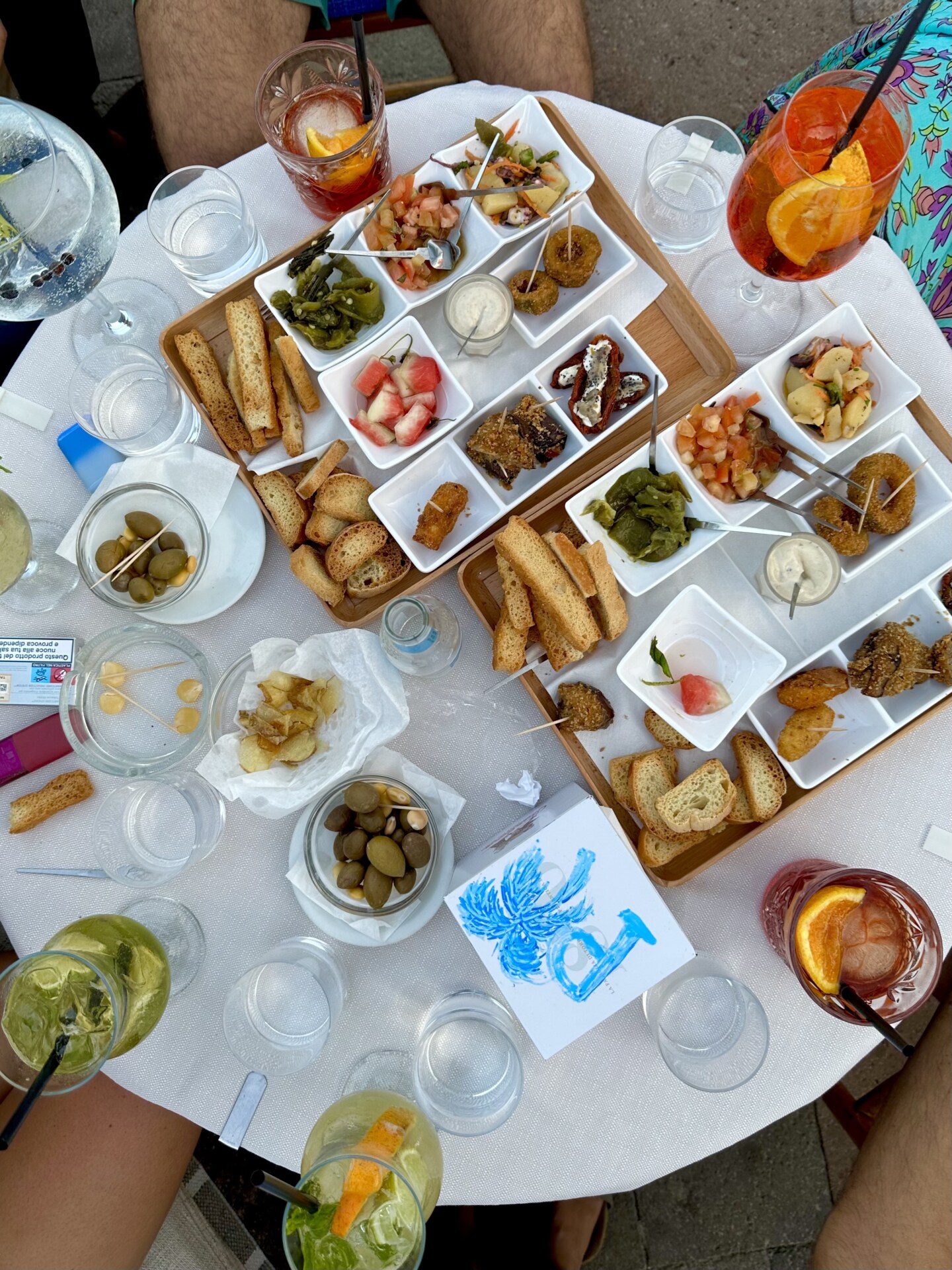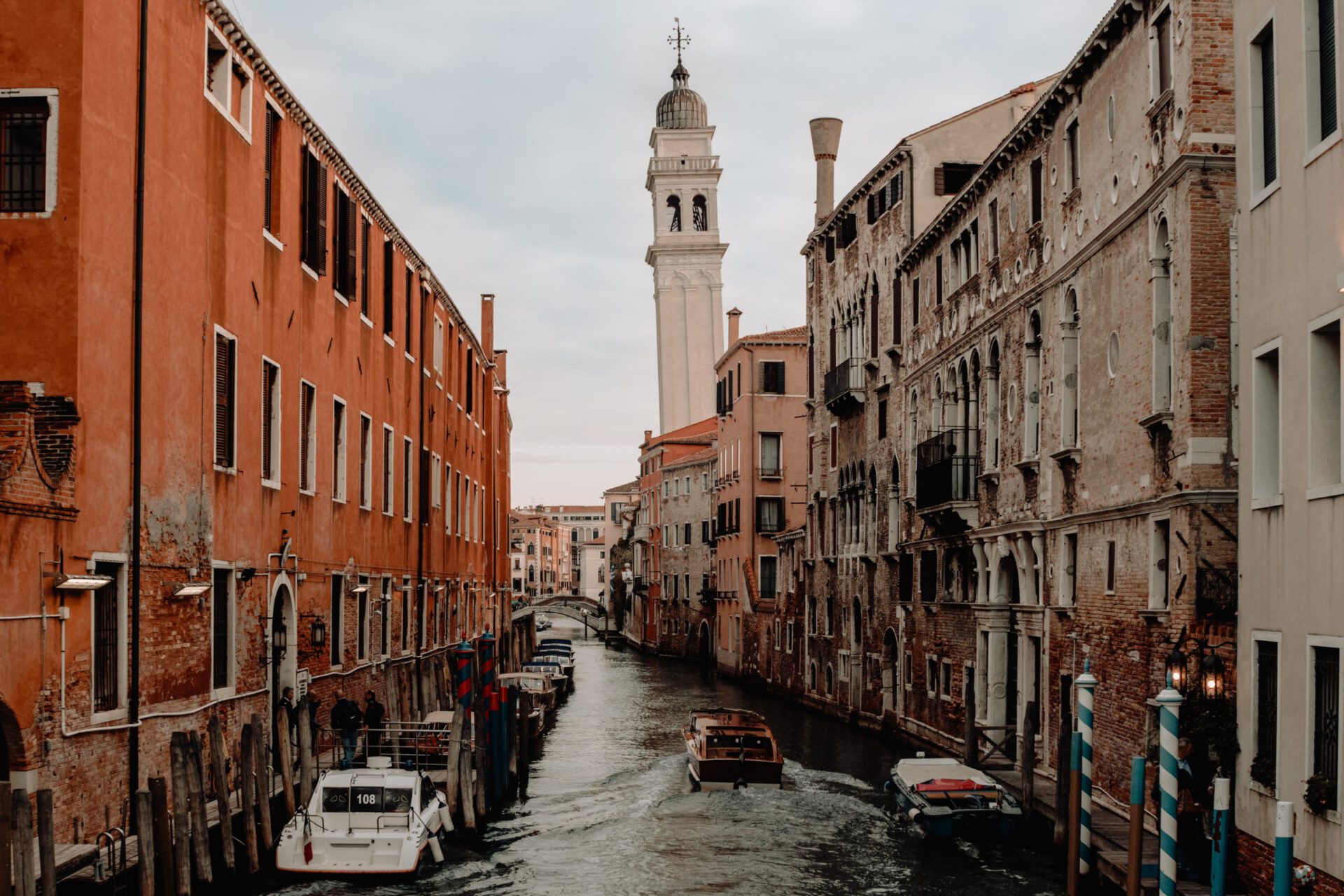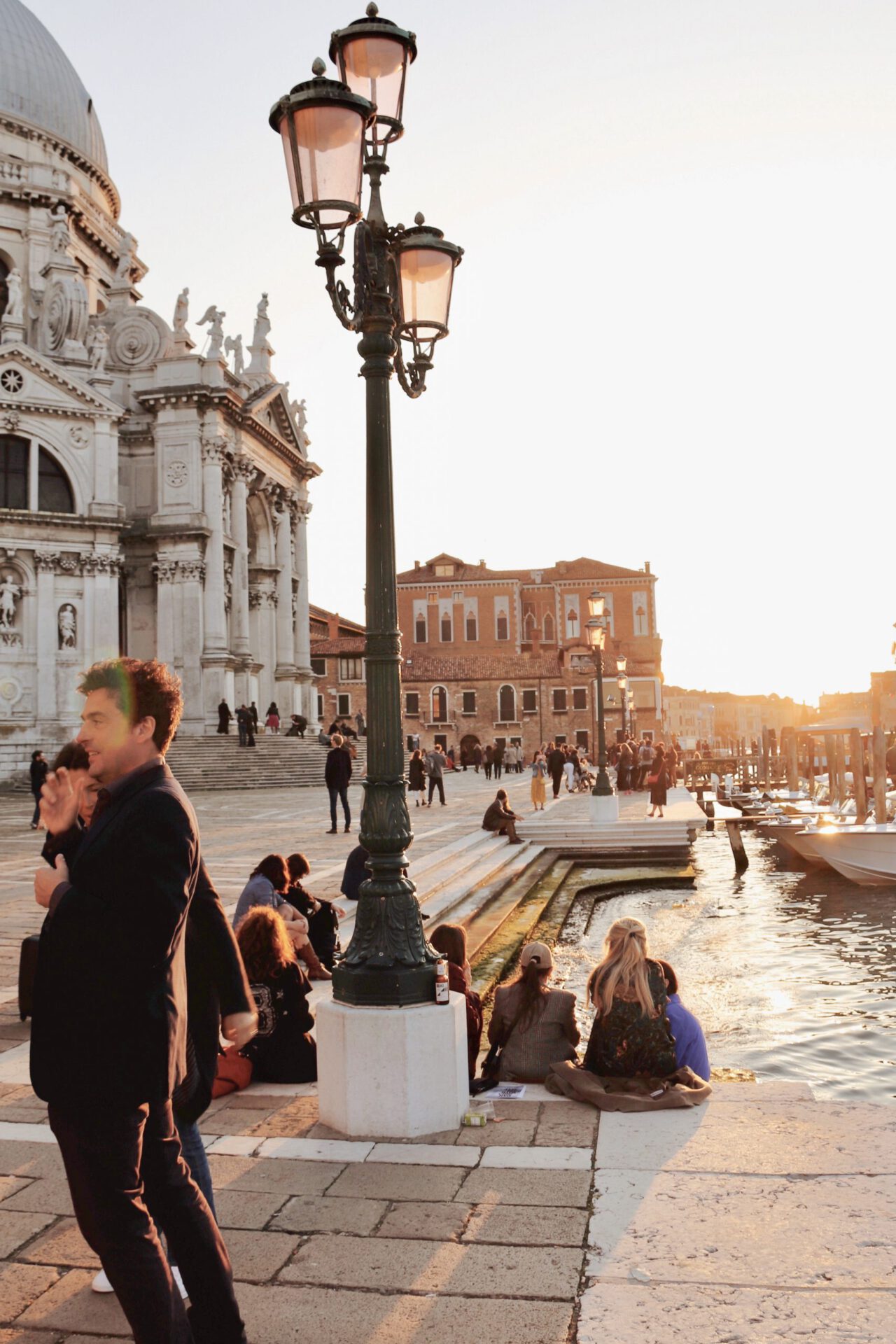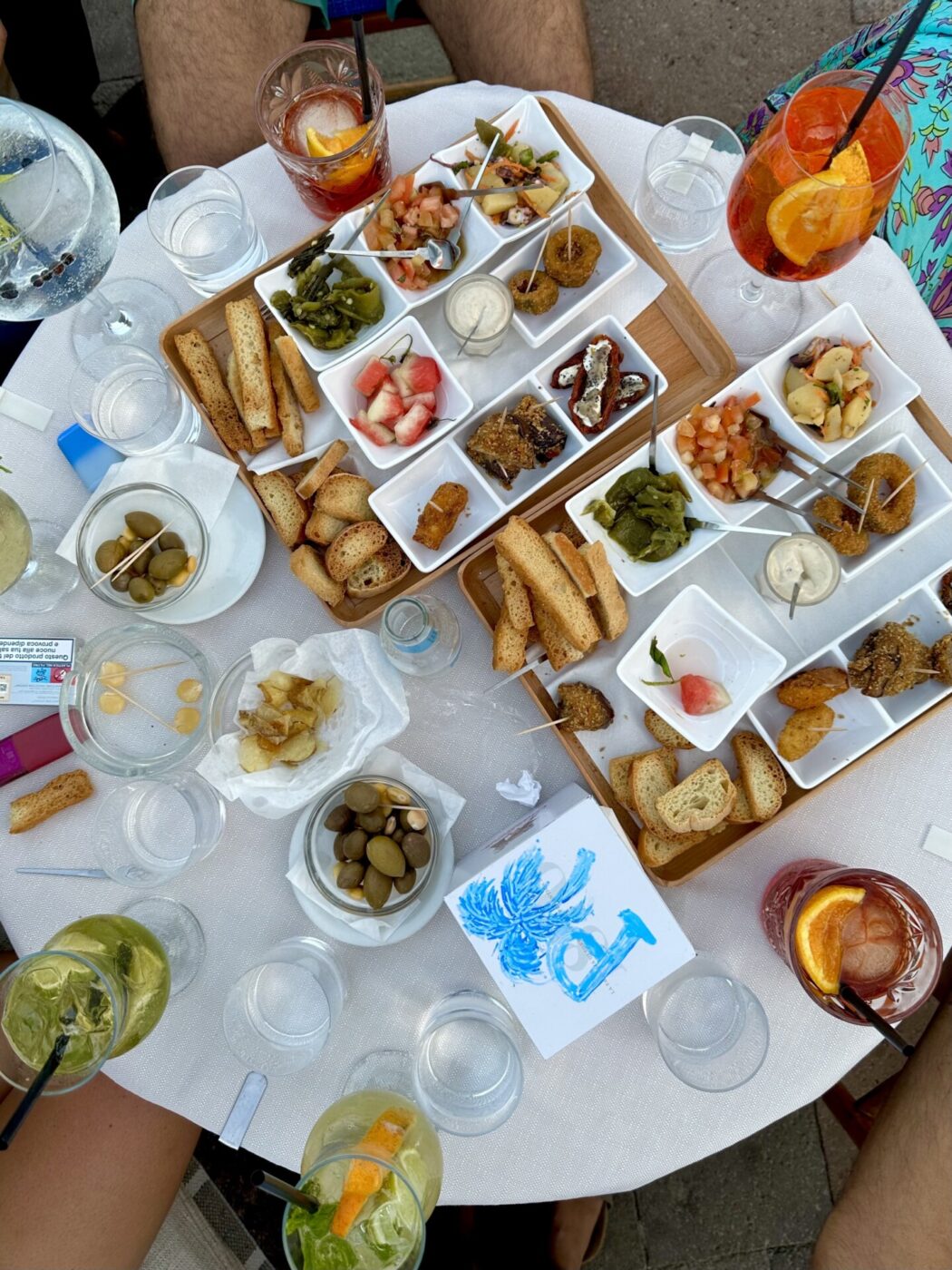Girl Dinner
We tried to ignore the #girldinner trend for a few weeks, but, like a whack-a-mole game at the fair, it just kept popping back up. Similarly to its predecessor, the charcuterie and cheese board trend, these snack-centric dinners are just TikTok-rebranded versions of aperitivo culture. Look, we love a snacking plate. Big fans. But why the gender of it all? Why are we still propagating the idea that girls and women don’t or shouldn’t eat real, full meals? That a handful of grapes and crackers for dinner are somehow representative of a feminine ideal? Here, it’s not the concept we’re iffy about, it’s the branding. From light bites for Merenda to evening aperitivos that inevitably almost always spill over to being apericenas (ie: longer aperitivos with more food and more drinks than the usual 5-8 window allows), Italians of all genders have been doing snacks for dinner since time immemorial. Or at least since 1748, when the first aperitivo concept was born in Turin, alongside the advent of Vermouth. In any case, we’re happy for Gen Z that they’ve hopped on the bandwagon, but, as seasoned veterans of the sport, we’d like to issue a PSA that they keep some Gaviscon handy, if they’re doing it right. Eating just cheese, cold cuts, and chips for dinner takes a toll, even when it’s accompanied by almond-mom favorites like carrot sticks and celery.

Attenzione Pickpocket!
We feel like we’ve been on a real journey with this one. When Monica Poli first graced our newsfeeds with her rallying cries of “attenzione pickpocket!” we were, like the rest of the world, obsessed. A vigilante wandering the streets of Venice, warning innocent passerby and warding off petty crime?! Incredible. It seemed like a wholesome act of grassroots public service, with a rallying cry so passionate that it’s been heard the world over and made Poli a star of a thousand TikTok spin-offs. But, as we have learned time and time again, we can’t just have nice things. Poli’s 15 minutes of fame earned her a series of interviews and profiles, through which it was discovered that she has long been a member of Lega, Italy’s far-right party that hinges its platform on targeting migrants, LGBTQIA+ folk, and denying asylum seekers. Turns out that her vigilantism is less about helping people keep their possessions safe and more about scapegoating Roma people, a population that have faced disproportionate hatred and discrimination all over Europe, and who have been a particular target for Lega. It’s been well-documented that there are spikes in hate crimes towards Roma people during the years of Lega being in power, particularly in 2017 and 2018. Bystanders to Coli’s cries have often seen her pointing at innocent Roma people, who are doing nothing more than sitting on the sidewalk or queuing for a cafe. In her words, “when I see them, I know they are pickpockets.” Maybe somebody should start calling more attenzione to that.

Venice
They say if you love something, you have to let it go. Sadly, such might be the case for tourists wanting to visit Venice. The city has just been proposed for UNESCO’s “danger” list, with overtourism, the climate crisis, and lack of infrastructure to deal with both of the above being the main concerns. As water levels continue to rise and tourists continue to flock to the city in droves, Venice’s historical sites are at increased risk of damage from flooding and overdevelopment. The first time UNESCO warned that the city was a ticking time bomb was in 2021, and they urged city officials and the Italian government to take action. In response, Venice banned cruise ships from docking at the port, and built seawalls around its lagoon to try to keep water levels stable. Many Venice locals, along with their government, have made huge efforts towards sustainability in the last few years, with projects aiming to regenerate local ecosystems popping up around the islands. Still, it’s just not enough, and UNESCO thinks that Italian officials have been too slow to get their act together (not surprising, to be honest). But, further curbing tourism could have a disastrous effect on the city’s economy and the livelihood of Venetians; it’s a double-edged sword. UNESCO is said to make its final decision next month at a special tribunal, and while being placed on the danger list wouldn’t have any actual bearing on the way the city runs and accepts tourists, it’s a pretty ominous sign. Regardless, if you’re traveling to Venice–or anywhere, really–try to do so consciously.



